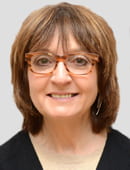“We start to reframe what it means to feel paralyzed in the agony of depression, not to be metaphorical, but to be literal.”
 An interview with Helen Mayberg, M.D.
An interview with Helen Mayberg, M.D.
Professor of Neurosurgery, Neurology, Psychiatry, & Neuroscience; Mount Sinai
By: Michelle Johnson (5/3/19)
When you were younger, what did you want to do?
Going back farther than I can clearly remember, if I could have been an artist or a musician and been really good at it, I would have preferred that—creativity was high on my list. I had family members that were physicians and scientists, and I [found that] the interplay of creativity and artistic expression could also be realized through science. There were a lot of things I liked to do; then the question became, what really grabs you, and what do you tend to have natural affinity for?
What questions are at the forefront of your mind now?
I’ve worked on the same thing my entire career: what’s the neurology of depression? Many people know me because of my brain stimulation work. That experiment came from studying people being treated and looking at the brain scan patterns—looking at the art of the brain so to speak, to say, “Here’s a common pattern across different modes of treatment. If that change –a decrease in a common set of brain regions can’t be achieved through conventional approaches, then perhaps one can target the brain circuit directly as is done for Parkinson’s disease—with direct stimulation. They interrupt the abnormal functioning of a motor circuit. Why can’t we do the same thing [in the depression circuit]?”
Once we started studying very resistant, depressed people with deep brain stimulation, and saw encouraging clinical effects suggesting that our basic hypothesis worked, the question became: what did we really do and how do we reverse engineer it? And then that became broader: what are the philosophical issues of being ill? Because as people emerge from a sick state, maybe the device doesn’t do everything, maybe it only does part of it. And in fact, as you look at these patients, you see the machine does part and the patient does the rest.
How has creativity entered your work?
When you really listen to a profoundly ill depressed person, the pain of their depression basically prevents their ability to move. The Parkinson’s (a movement disorder) severe state and the depressed severe state share more than is intuitive. We start to reframe what it means to feel paralyzed in the agony of depression, not to be metaphorical, but to be literal.
We had a graduate student who was getting his PhD in English literature who read transcripts and listened to the tapes of the interviews of the patients before surgery. He found that patients, when they were ill, had vertical metaphors. They were in a hole, they were drowning, they were in quicksand, they were in a shaft, they were in a pit. As they emerge, though, they talked about “negative” and “positive” as going forward and backwards—they moved from vertical to horizontal. Psychiatry deals in metaphors, and a fundamental question is whether or not those metaphors can be reduced to their neurological origins.
What has it been like doing such interdisciplinary work?
In my new position at Mount Sinai as Founding Director of the Nash Family Center for Advanced Circuit Therapeutics, we are creating a shared ecosystem of neurologists, psychiatrists, neurosurgeons, neuroscientists and engineers to catalyze a new model of research and care for patients with severe neuropsychiatric disorders—starting with DBS for Parkinsons’ disease, OCD and Depression. With everyone in the same space, we can routinely see each other’s patients and develop neuromodulation strategies that address common mood, cognitive and motor problems. We want to break down classical boundaries of neurology and psychiatry towards a new language that addresses the surgical treatment of circuit dysfunction regardless of diagnosis.
[Personally], I’ve constantly fought against the box that I’ve been placed in. I’ve never had formal training in psychiatry or radiology or functional neurosurgery; I’m trained as a classical neurologist. But, in order to answer the scientific questions I care about, one needs to be both collaborative and interdisciplinary. What we thought we were doing in the beginning has evolved and future progress will require expanded clinical and scientific partnerships involving not just neuroscientists and physicians but ethicists and technology developers all in the pursuit of innovations that meet the needs of our patients.
To learn more about Dr. Mayberg and her work, click here
Click here to go back to the “Interviews with Scientists” page.
